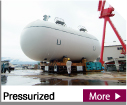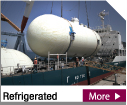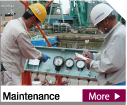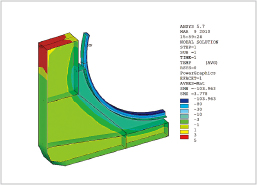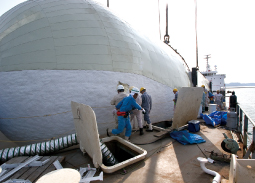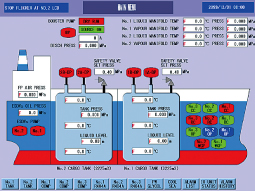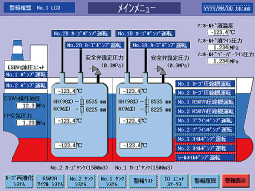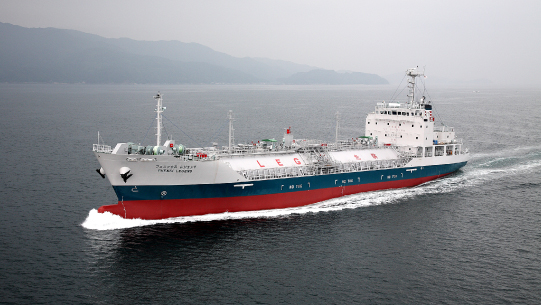

Enduring low temperature
Semi pressurized fully refrigerated tank plants have different low-temperature capabilities depending on the cargo carried, with ethylene refrigerated to -104°C and propylene cooled to -48°C. Therefore, we carefully select materials for the tank itself according to their resistance at low temperatures and compatibility with cargo, repeatedly consider tank materials and welding materials that can confirm and ensure quality together with material makers, and conduct more than enough trials.
Maintaining low temperature
Semi pressurized fully refrigerated tanks have insulation to prevent heat ingress from the surroundings, and we pay particular attention to measures against strain caused by any differences occurring in the expansion and shrinkage between tanks and insulation materials, and compatibility between the foundation on the ship and the tank supporting system. We do this in order to use insulation suited to the temperature at which the tank is used. We work to ensure quality so that maintenance work can be kept to a minimum during useful life.
Cooling to low temperature
Re-liquefying equipment is installed to maintain low temperature for cargo, and to cool liquids down from the time of loading. In this area, our goal is to provide equipment that satisfies customer requests regarding the cool-down speed required for each cargo, and that minimizes the maintenance burden. After the ship is completed, we confirm the soundness of the cargo tank plant, including cargo piping systems and equipment such as cargo pumps, through performance tests in the form of gas trials, and we also attend the first cargo loading, which also serves as a full loading test of the cargo. In addition, we confirm the soundness of insulation systems through a cold-spot inspection of insulation materials.
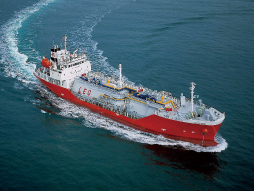
1,520 m3 liquefied ethylene gas carrier
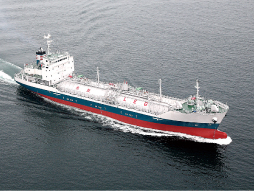
3,000 m3 liquefied ethylene gas carrier
Copyright (C) 2010 IZUMI STEEL WORKS,LTD.
